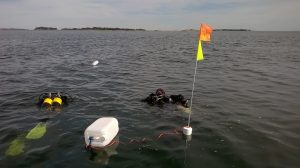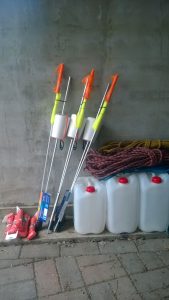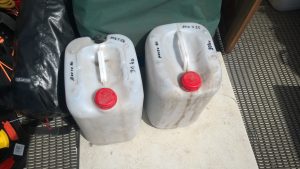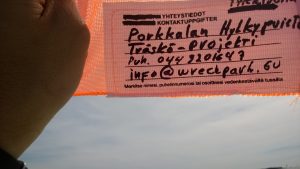The second prestudy trip was made 27.5.2018, during which the Cannonside wreck was located and initial “diver” buoys for the safe descend/ascend were placed on all three before mentioned wrecks. The Cannonside wreck was also surveyed to the extent, that it became evident, that it is not a wreck of any individual/whole vessel, but a hull fragment of a fairly large warship with cannons.




As depicted above, wreck & environment friendly 25 liter polyethylene canisters were used for both: the descend/ascend line buoys and anchor weights, the latter filled with sand of course. The anchor weights were placed only 2-3 meters outside the wrecks for safety reasons and guide lines into the wrecks were installed. Four liter sand filled polyethylene canisters were used as fittings in the wreck end of the guide lines, to minimize the risk for damage to the wrecks in situations, where the diver buoys would be used for mooring against all instructions. No lines were attached to the wreck itself.
A novel idea, of utilizing simple rope ascenders for adjusting the descend/ascend rope tension according to the current sea level, was also tested and deemed very easy to use. This kind of setup provides more counterweight (approximately 30kg), than any diver could reasonably be expected to have buoyancy – even in emergency situations. The opposite applies to the positive buoyancy (25N) as well, as the buoy canisters are adjusted to stay fully afloat. Professional fishing markers with double flags were attached to the buoys, to comply with regulations and to provide contact information of the project.
